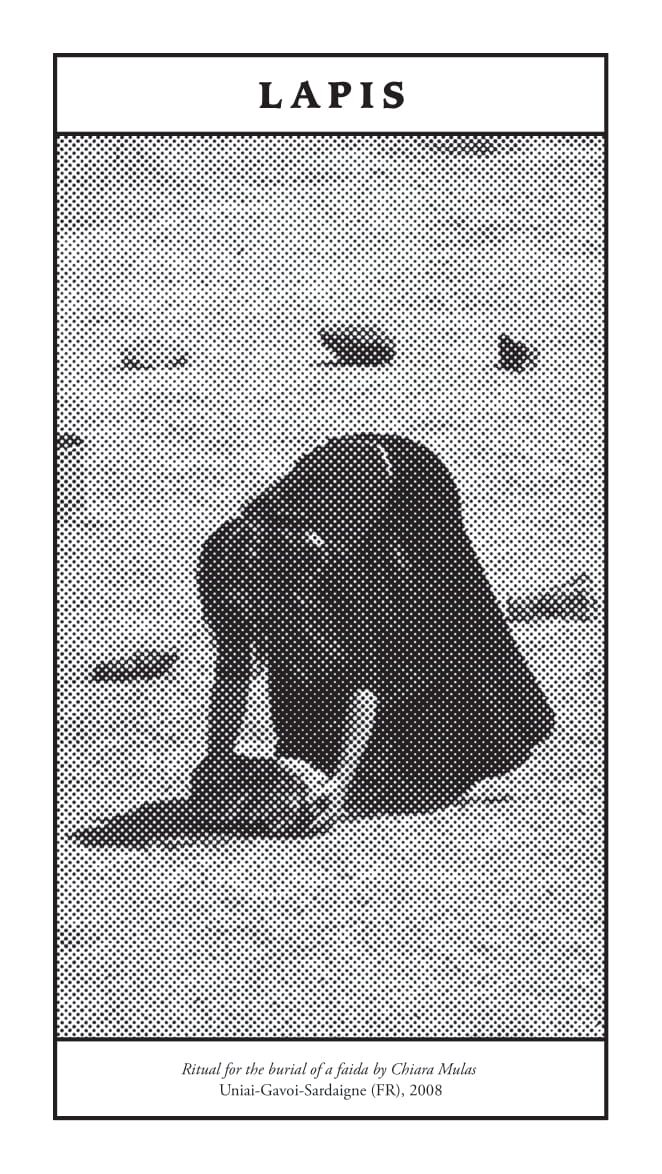mots-clés
covid19, feminism, privateispolitical, protest


covid19, feminism, privateispolitical, protest


BlackLivesMatter, fly-posting, sigil, symbol


birmanie, burma, fistraising, protest, unifyinggesture


dance, faida, healing, ritual, stones, trance


dance, feminism, hex, protest, W.I.T.C.H
Each drawing of the tarot is motivated by an intention that precedes it. The cross spread thus offers a possible reading of it.
The cards are read from left to right, top to bottom, passing through the centre, which is the last card read.
[ I ] The first card drawn is the one lying on the left,representing resources in relation to the intention which starts the reading: strengths, advantages and recourses.
[ II ] The second card drawn is the one lying on the right, representing resistances in relation to the intention: adversity, pitfalls, blockages, or defences.
[ III ] The third card is at the top of the spread, and represents the charge of potential with regards to the intention: faculties, opportunities, chances.
[ IV ] The fourth card is situated at the bottom of the spread. It represents the particular commitment regarding the starting intention: vectors, paths, influences, situations and the axes.
[ V ] The fifth card is in the centr, at the base of the spread. It shows affects in relation to intention: consecrations, or qualifications.
The first two cards drawn at the end of the spread act in a position of duality. If the forces of the mobilised arcana are equivalent, the intention can be negotiated or constrained.
The third card at the top operates in magnetism with the first and the second, which allows for a more straightforward reading.
The third card leads to the fourth to specify the axis of the committed intention.
The fifth card, known as the base, opens with a proposal. From the global draw, the proposal should be narrated and activated in the public space.
I
II
III
IV
V